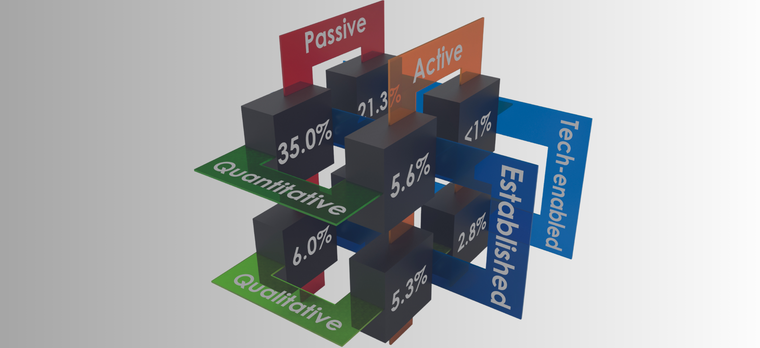Navigating Rising Costs and Shifting Modes
Lessons from the Global Prices Study 2025

A Market Under Structural Pressure
The Global Prices Study 2025 paints a clear picture: research is becoming more expensive across almost every mode and project type. Labour-intensive approaches, for example, face-to-face (F2F) and computer-assisted telephone interviewing (CATI), have seen the steepest increases. Online methodologies, once the disruptively low-cost option, are not immune to upward pressures. Panel recruitment challenges, higher incentive costs, and quality assurance investments are pushing online prices up.
The cost differentials between modes remain, but the underlying economics are converging. All methods are getting more expensive, albeit at different paces. For providers, the question is less about holding costs down and more about justifying value. For buyers, the emphasis needs to shift from choosing the cheapest method to selecting the one that best aligns with research objectives, agility needs, and representativeness.
Consistent Patterns Across Projects
There are four clear messages that occur across the different sorts of projects examined in the study and across the markets.
1- Online is dominant in Frequency and Scale
Across U&A studies, tracking, and B2B projects, online emerges as the most widely used mode, conducted at higher frequencies than F2F or CATI. Agencies report running online projects 50+ times per year far more often than traditional modes. This reflects scalability, faster turnaround, and cost efficiency. Even in qualitative domains such as focus groups and online discussions, the online share is climbing, narrowing historic price gaps between online and in-person approaches.
2- F2F and CATI are Becoming Specialised Niches
Both F2F and CATI continue to deliver unique value in hard-to-reach populations, complex longitudinal tracking, and high-engagement qualitative work. However, they are now used less frequently, spreading fixed overheads over fewer projects. This is another factor that itself drives up per-project costs. Instead of being the default choice, these modes are evolving into specialist tools deployed when methodological richness or population coverage justifies the expense.
3- Convergence in Costs Across Modes and Sample Sources
In B2B research there used to be a clear cost hierarchy. CATI more expensive than online and agency-sourced samples costlier than client lists. By 2025, those gaps have narrowed. Similarly, consultancy projects show premium pricing regardless of geography, with less extreme variation than in earlier waves. This suggests an industry converging toward a baseline of high costs, irrespective of method.
4- Role of Technology: Essential, Not Always Cheaper
Automation, digital platforms, and AI are increasingly embedded in workflows, but they are not yet delivering cost reductions for everybody. Instead, they add value by enhancing speed, monitoring, and quality assurance. In qualitative research, AI tools are beginning to reshape cost structures by reducing dependence on live moderation, though this remains emergent. The message is clear: technology is an enabler of efficiency and scale, but not currently a silver bullet against rising operational expenses.
Where Have Roles and Projects Changed Most?
There are three areas that need to be highlighted in terms of change.
Data Collection Specialists and Field Teams
The most dramatic change has been in roles tied to labour-intensive fieldwork. Interviewers and field managers face higher wage expectations, tougher working conditions (including safety issues in some markets), and more complex compliance environments. Attrition and retraining costs are escalating. This makes human-driven modes both more expensive and more fragile in terms of supply.
Panel and Recruitment Management
Online research has shifted the pressure onto panel companies and recruiters. Rising incentive demands, panel fatigue, fraudulent responses, and quality control investments have reshaped these roles. The cost of securing reliable, engaged respondents is now a major driver of online project budgets.
Consultancy and Strategic Roles
At the other end of the spectrum, research consultancy is growing as a premium service. Although based on data already collected, these projects carry rising fees, up nearly 30% since 2021. Agencies are increasingly positioning consultancy as strategic business support, providing actionable recommendations rather than raw analysis. This shift highlights a growing role for consultants and analysts who bridge insights with business decisions, cementing research as a value-add beyond data delivery.
The General Message: What Buyers and Providers Should Take Away
There are some clear messages in this report for providers and buyers.
For Providers
Differentiate on Value, Not Price: With costs rising across the board, competing purely on cost is a losing strategy. Providers should emphasise insight quality, methodological fit, and speed of delivery.
Invest in Technology Thoughtfully: Automation, AI analysis, and digital platforms offer efficiency but must be balanced with credibility and transparency. The role of technology is to enhance trust and quality, not just to cut costs.
Specialise Strategically: F2F and CATI are not disappearing, but their role is narrowing. Agencies that maintain expertise here should market them as premium, specialist tools for contexts where online cannot deliver.
Expand Consultancy Offerings: As clients demand clearer recommendations and roadmaps, agencies can move up the value chain. This means investing in strategic talent capable of linking insights to business action.
For Buyers
Shift Focus from Cost to Fit: Buyers should approach mode selection not just as a price comparison exercise, but as a strategic alignment question. What method yields the data quality, agility, and representativeness needed? If you need F2F, you need it and will have to pay for it.
Expect Higher Baseline Costs: Budgets must account for a new normal of elevated prices across modes. The cheapest options of previous years no longer exist.
Leverage Online, but Stay Alert to Quality: Online methods will continue to dominate, but buyers must push for strong recruitment practices, incentive structures, and data quality safeguards to ensure value.
Recognise the Consultancy Premium: Strategic consultancy is no longer a nice-to-have but a premium segment. Buyers seeking more than raw data should be prepared to pay for expert guidance that translates insights into action.
Conclusion: Towards a Value-Centred Research Market
The 2025 Global Prices Study signals an inflection point. Traditional modes are shrinking into specialised niches, online has moved from low-cost disruptor to mainstream workhorse facing its own cost pressures, and consultancy is emerging as a premium service. Underneath it all lies a common theme: research is becoming more expensive, but also more strategically valuable.
For providers, the challenge is to embrace efficiency while deepening expertise, showing clients that higher prices buy better outcomes. For buyers, the lesson is to recalibrate expectations. Don’t simply chase the lowest cost, choose the method and partner aligns best with the business questions.
The market is shifting from a contest of cost to a competition for credibility, quality, and strategic impact. Buyers and sellers both need to remember that the real value of research lies not in how it is collected, but in how it is applied.
Esomar’s Global Prices Study is a biannual study that delves into the prices of market research projects across the globe. Download the report to benchmark your prices against the global, regional and country-level median prices.
Ray Poynter
President at EsomarRay has spent the last 45 years at the intersection of insights, research, and new thinking. Ray has held director-level positions with companies such as The Research Business, IntelliQuest, Millward Brown, and Vision Critical. Ray is committed to the research and insights industry, having been a member of ESOMAR for over 30 years and a fellow of the MRS.
In recent years Ray’s work has focused on training, writing, speaking and sharing. Ray has run training workshops for a variety of national and international organisations, including RANZ, TRS, JMRA, MRS and ESOMAR. Ray has written textbooks, taught at Saitama and Nottingham Universities, regularly blogs, and is active on social media.
In 2023, Ray was elected President of ESOMAR.


